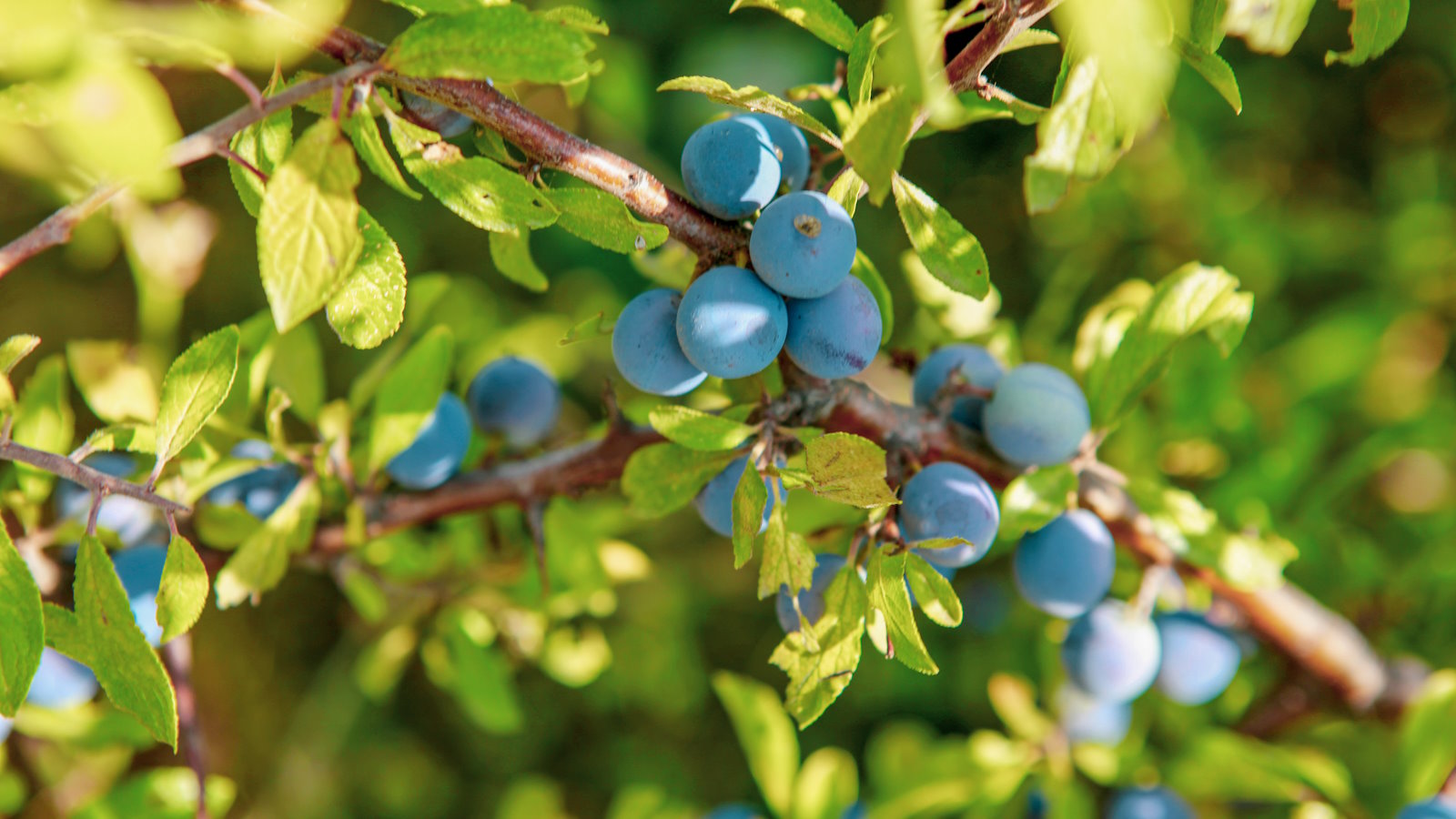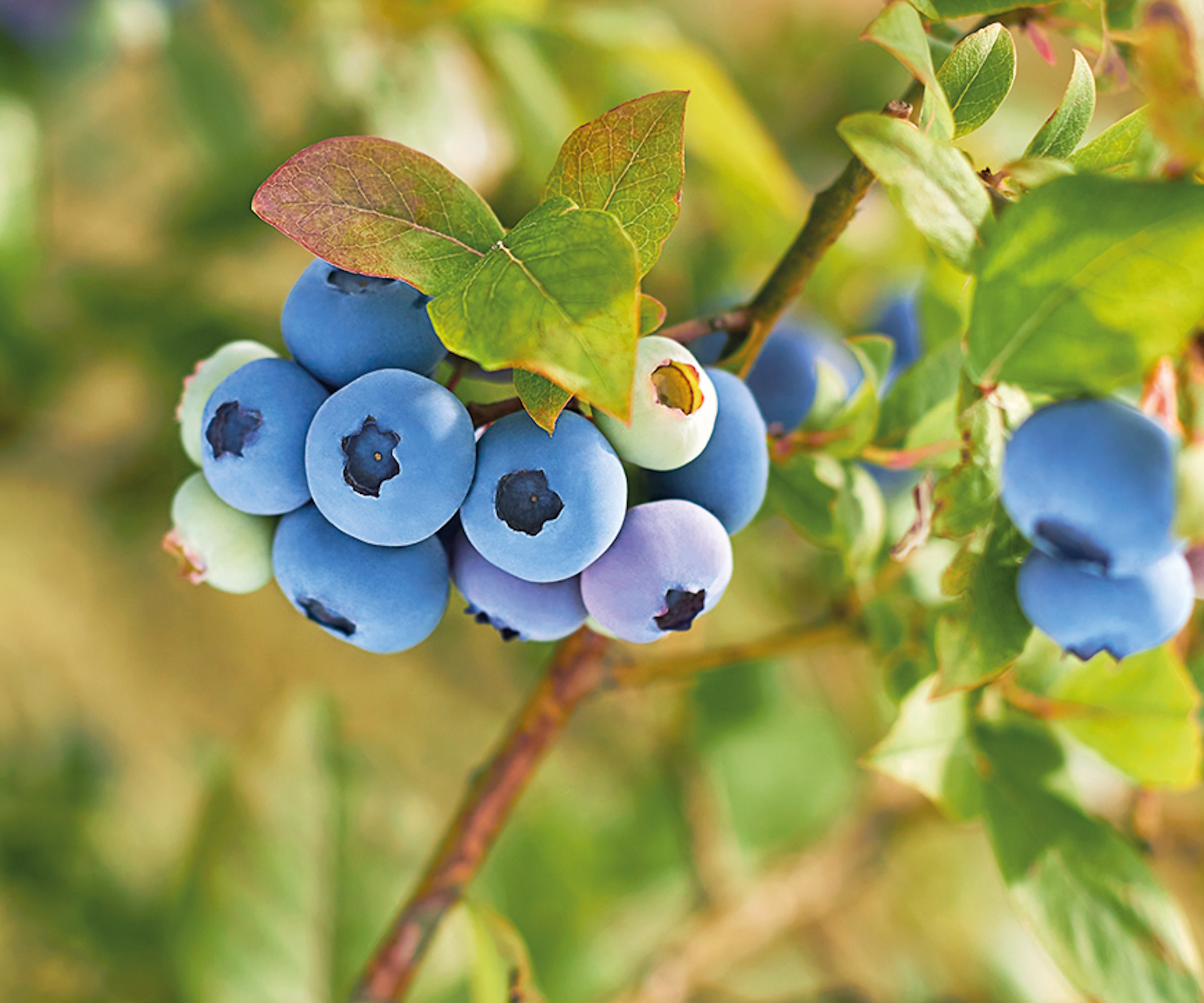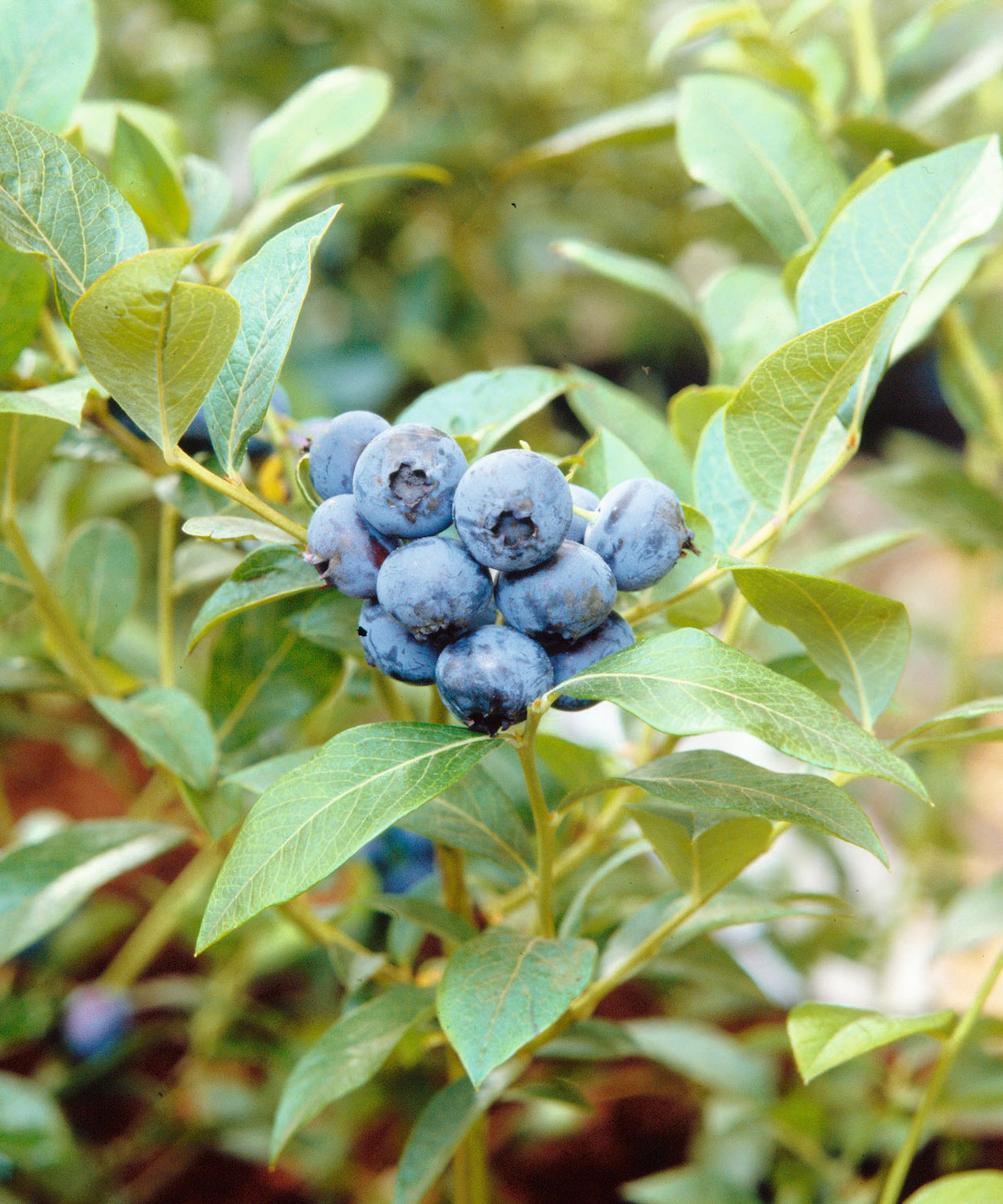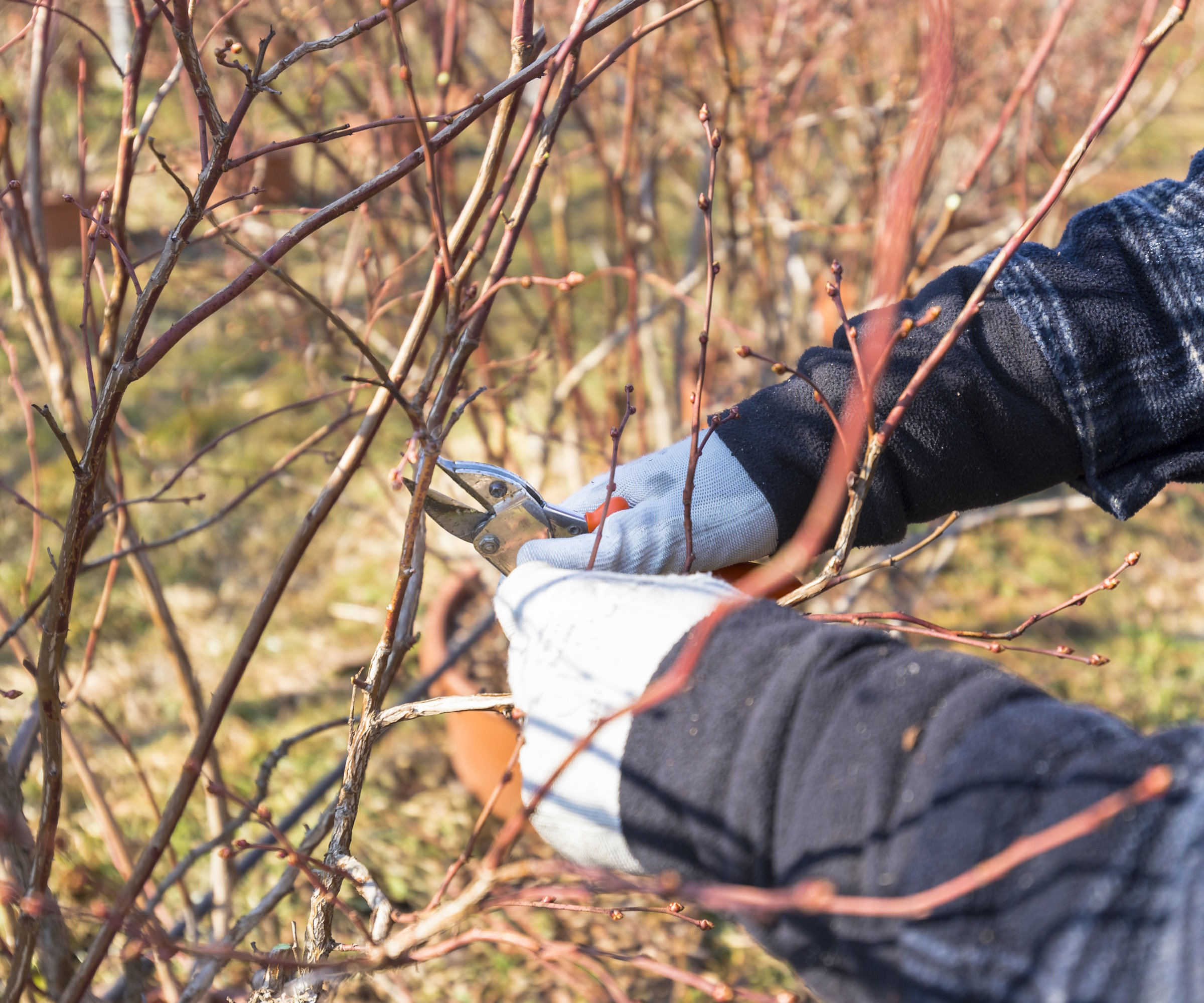How to prune blueberries to get the best crop – no matter the age of the plant
Knowing how to trim blueberry bushes means your plants will be as productive as possible


The process of pruning blueberries is very simple and, with only a few selective cuts each year, you can enjoy a crop of delicious and highly-nutritious berries year-after-year.
If you are new to growing blueberries, or simply feel inspired to add blueberries to your garden ideas thanks to the long list of health benefits they can provide, then you do need to understand the importance that pruning will have. The health of the plant, along with the size and quality of any harvest, is tangibly linked to the correct pruning. It not only encourages lots of stems to bud and fruit on, but more air can circulate to reduce disease and lots of sunlight can penetrate into the bush to ripen berries.
I have grown and looked after blueberries while working as a professional gardener in the UK. There were blueberries in raised garden beds and also containers in the walled kitchen gardens I looked after. The plants were pruned annually to keep them productive and the berries were harvested for chefs.

Blueberries are a superfood high in vitamins
Why grow blueberries?
As well as the delicious fruits, which have long been considered a superfood, if you plant blueberries in your kitchen garden you also benefit from the bell-shaped white flowers and also a gorgeous fall leaf color. You can also grow blueberries in pots filled with fertile and free-draining compost. Here, we take a look at the pruning regime required for healthy blueberries.

Blueberries are ripe for picking each summer
How to prune blueberry plants
Blueberries fruit on wood which is at least one year old. The best fruiting branches are two and three years old, and the productivity fades the older the branches get. Therefore, when it comes to pruning blueberry bushes, it is advisable to get a good mix of stems on the bush. You want a combination of older stems, those at the peak of their productivity, and young stems to carry the fruit in future years.
Blueberries are relatively easy to prune and the best time to go out with your clean and sharp pruning shears is during the plant’s dormancy season. The plants can be pruned anytime from November to March, but there are definite benefits to leaving it to later in the pruning window.
In February or early March the buds will be starting to burst, and they are easily distinguishable. Fruiting buds are fatter than the smaller ones that will produce the leaves. If you prune when the buds are easy to identify, then it helps ensure you can have a bush that has a good mix but also a lot of fruiting buds for the season.
Design expertise in your inbox – from inspiring decorating ideas and beautiful celebrity homes to practical gardening advice and shopping round-ups.

Blueberries are pruned during their dormant period
Pruning new blueberries
A common question when it comes to growing blueberries is should you prune when you plant blueberries? And the answer is no. You do not have to prune the bushes until they are established, which is likely not until the third year after planting. During those first two years, simply remove dead, diseased, or damaged wood and take out any stems that are crossing and rubbing.
Pruning established bushes
For established blueberry plants, you need to focus on those aspects mentioned above, but it is also a case of thinning older stems that have carried fruit to encourage new strong growth to come through. A healthy blueberry plant can be achieved in four simple annual pruning steps:
- Locate any dead, diseased, or damaged branches and remove these completely
- Identify and remove crossing and rubbing wood that could create wounds and be entry points for disease
- Remove any low horizontal stems close to the ground that blueberries regularly put out
- Remove up to a third of the oldest stems that have been cropping for two or more years. Cut these stems all the way back to the ground. The color of the stems can help identify older stems from new ones. The oldest wood will have rough bark and be a lighter color than younger stems.
It is not advised to cut blueberry bushes right to the floor. If you do need to renovate an old and overgrown blueberry, then it is better to do it over a couple of years. Regular removal of old wood and the replacement growth of new stems will take a few years, but you can get a healthy and productive bush with a bit of patience.
After you have pruned a blueberry bush, it is beneficial to fertilize your blueberries with a fertilizer especially designed for acid-loving plants, such as the Down to Earth All Natural Acid Mix Fertilizer available at Amazon. Then give the plant a thin layer of mulch.
FAQs
Do blueberries need to be cut back?
It is always recommended to prune blueberries annually to keep the plant in shape and maintain its productivity. A neglected and unpruned bush will be full of unproductive old wood. They may still produce a small number of fruits, but overgrown and congested bushes will be at an increased risk of disease due to a lack of air circulation and light penetration.
Do you prune blueberries after fruiting?
Blueberries fruit in summer and it would be too early to prune blueberries just after fruiting. Pruning in late summer or fall would be a pruning mistake and it risks the bush putting on a late flush of new growth. This growth would be damaged by winter frosts and could affect the overall cold-hardiness of the plant. It is always best to wait until the dormancy period to head out and prune.
When pruning blueberries, you can also take cuttings to grow more plants. For the best plant cuttings, you will want to use blueberry stems that are one-year old and at least six inches long. Make a cut below a bud and place the cutting in a pot filled with free-draining compost. Keep it moist, but not waterlogged, and somewhere warm and light and hopefully it will start rooting within a few weeks.

Drew has worked as a writer since 2008 and was also a professional gardener for many years. As a trained horticulturist, he worked in prestigious historic gardens, including Hanbury Hall and the world-famous Hidcote Manor Garden. He also spent time as a specialist kitchen gardener at Soho Farmhouse and Netherby Hall, where he grew vegetables, fruit, herbs, and cut flowers for restaurants. Drew has written for numerous print and online publications and is an allotment holder and garden blogger. He is shortlisted for the Digital Gardening Writer of the Year at the 2025 Garden Media Guild Awards.
